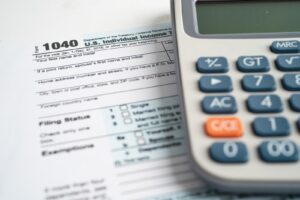When federal authorities want to keep airline passengers informed about air safety, they use a color-coded system to convey various levels of risk.
Red is the highest level – symbolizing a “severe” threat of a terrorist attack. An orange threat level means “high” risk; while green means “low” risk.
What if there was a similar color-coded system that could alert you to threats to your finances?
Theodore Connolly, a Boston-based bankruptcy attorney and the author of The Road Out of Debt, says there is such a system. He should know, because he created it – along with his co-author Joan Feeney, a U.S. Bankruptcy Court judge for the District of Massachusetts.
The duo says that there are times when your finances face severe external threats – times when you should immediately consider bankruptcy, as a way to fend off current or impending attacks. But in other cases, they say, you’d be better off negotiating more aggressively with your creditors, fine-tuning your budgeting techniques, or simply getting help from a credit counseling agency.
“The three main causes of bankruptcy are job loss, divorce and medical bills,” says Connolly, noting that there were 1.5 million bankruptcy filings in America for the year ended June 30, 2010. “People want to pay their bills,” he adds. “But when you have so many people out of work, we’re just going to continue to be inundated with bankruptcy filings.”
So how do you know if it’s time to file for bankruptcy protection – or whether you should try another option?
Use this color-coded threat level system, as outlined in The Road Out of Debt, as your guide: Green Level: No Need for Bankruptcy
At this stage, your threat level is low. Your debts are minimal and manageable. Your income exceeds your expenses, and you have enough savings or assets to ride out any crisis.
You are in the green level if you:
- Pay all your bills on time
- Have assets, including healthcare coverage, to carry you through emergencies
- Have no credit card debt or are steadily reducing your credit card balances every month
- Save money each month
Blue Level: Make Financial Changes
At this stage, your threat level is guarded. You don’t need to resort to bankruptcy. But you should get serious about proper budgeting and curbing your spending.
You are in the blue level if you:
- Fear losing your job
- Can’t pay off your credit cards and have increasing debts
- Have both secured debts (like a car loan or mortgage) and unsecured debts (like credit cards or personal loans)
- Do not save money each month
Yellow Level: Consider Bankruptcy
At this stage, your threat level is elevated. Perhaps you’re experiencing a personal issue (such as divorce) or a professional setback (such as a layoff). Whatever the reason for your economic difficulties, now is the time to negotiate with your creditors and consider all your financial options.
You are in the yellow level if you:
- Fall behind in paying some secured or unsecured debts
- Get phone calls from debt collectors
- Have little or no savings, diminished assets, or no health insurance
- Have been out of work for one month or more
Orange Level: Strongly Consider Bankruptcy
At this stage, your threat level is high. Your financial problems have worsened over a period of many months, perhaps as long as a year. You still have options, such as entering a debt management program. But you should also strongly consider contacting a bankruptcy specialist or a legal aid clinic for an explanation of your alternatives.
You are in the orange level if you:
- Are more than 60 days behind on paying more than one bill
- Use new credit cards to pay the minimums on other credit cards
- Have pending lawsuits against you
- Can’t pay off your unsecured debts in full within five years
- Owe big medical bills or taxes that you can’t pay
- Have been out of work for more than three months
Red Level: File for Bankruptcy Immediately
At this stage, your threat level is severe. You are likely undergoing extreme financial stress because of past-due bills and legal actions taken against you by various creditors. Unfortunately, your options are far more limited and the time for negotiation has passed. Bankruptcy is likely your best option to ward off some of the financial blows you are enduring.
You are in the red level if your:
- Unsecured and secured debts can’t be paid
- Wages have been garnished
- Bank account has been tapped via a court order
- Car has been repossessed (or will be soon)
- Home is set for a foreclosure sale
- Unemployment benefits are ending or you have no income
“If someone is trying to take control of your checking account, or you’re going to lose control over some asset, then bankruptcy can stop that and give you time to figure things out,” Connolly says.
Two other red flags that could alert you to the potential need for a bankruptcy filing: you’re so cash-strapped that you use credit cards to pay for everyday bills, like groceries and gas, and you can’t pay legally required obligations, such as alimony, taxes or child support.
“Bankruptcy should always be the last option,” Connolly adds. “But when your debts become really overwhelming, and it starts to make your life so miserable that you can’t function normally, then it’s worth considering.”
Read: Can I Qualify for a Mortgage After Bankruptcy?









Comments are closed.